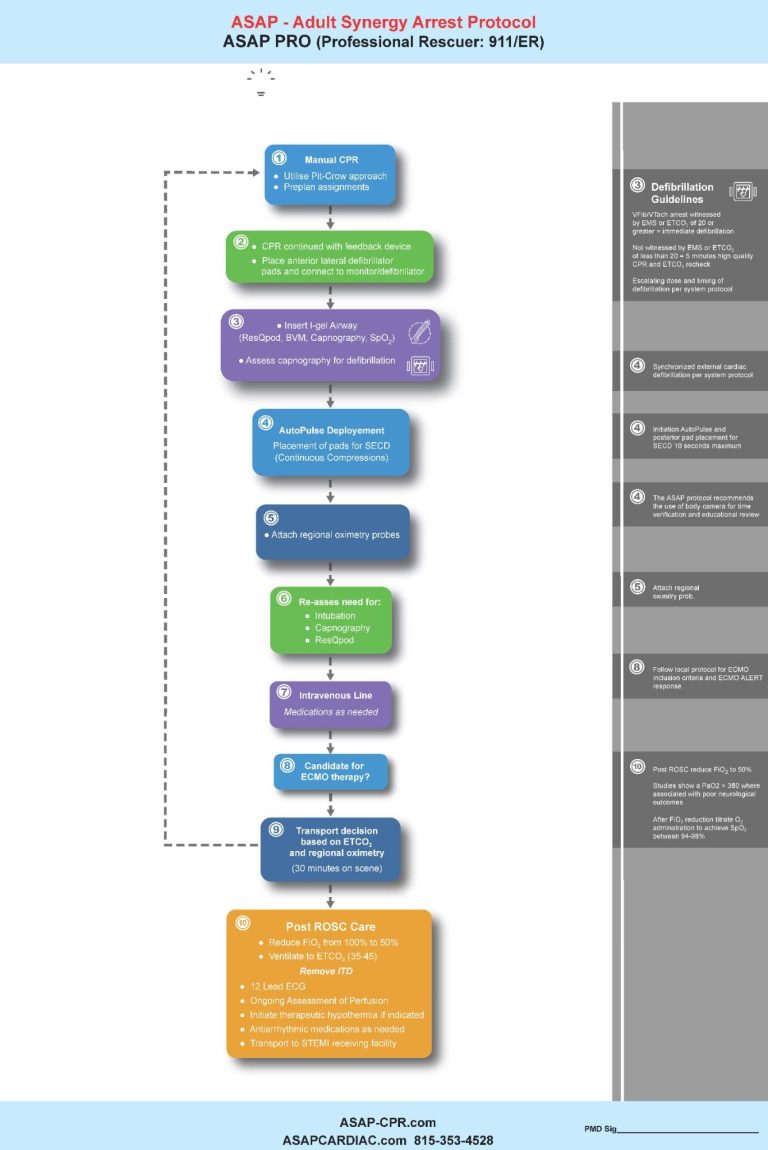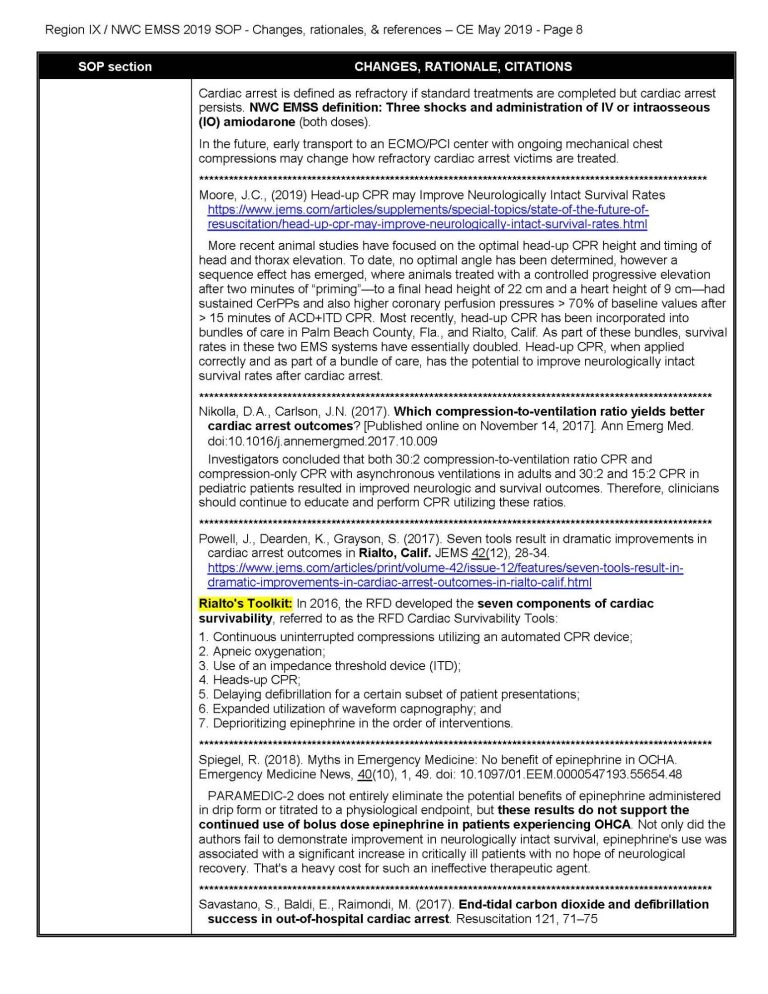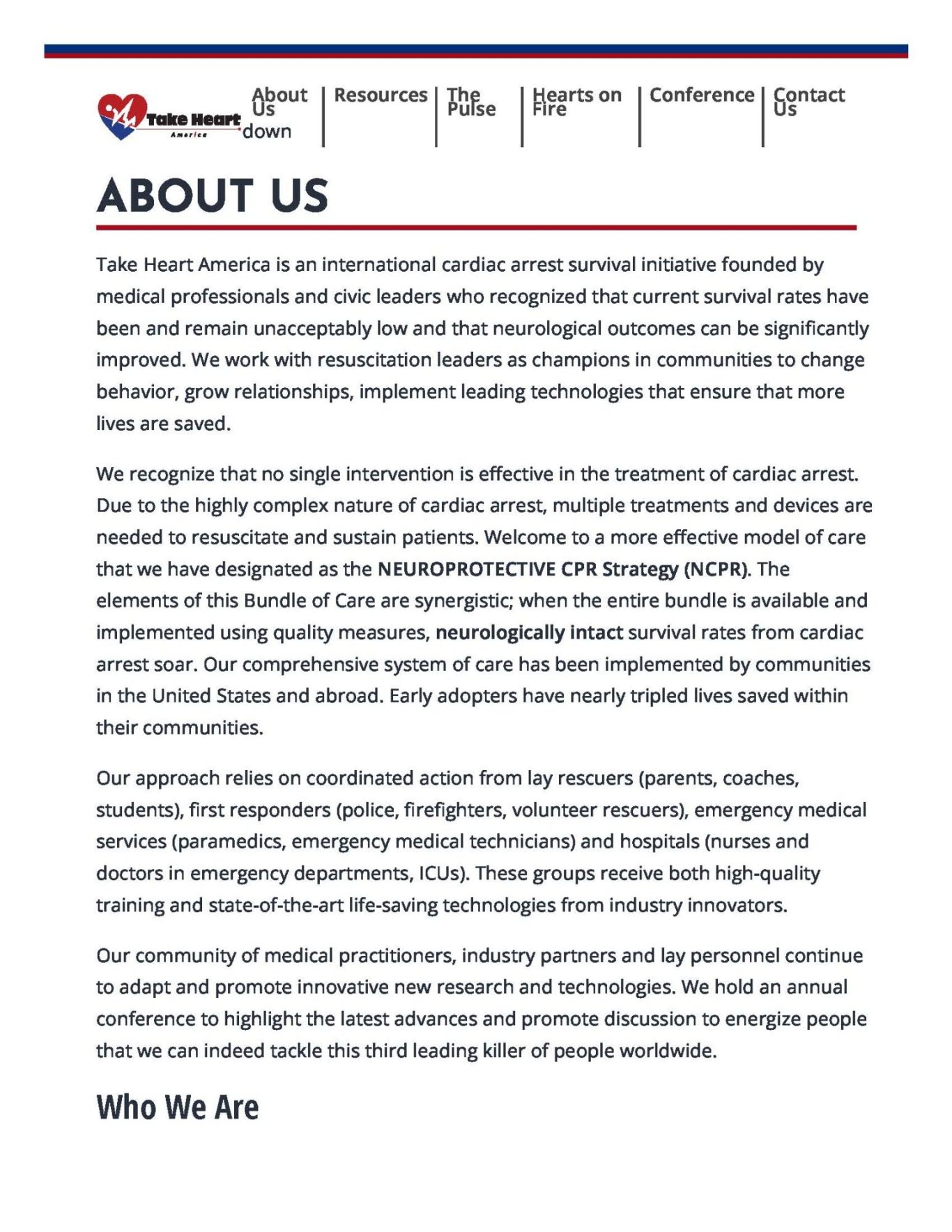Transitioning from AHA to ASAP Protocols in Emergency Cardiovascular Care with Assurance and Confidence.
The American Heart Association Acknowledges the Necessity of Customizing Resuscitation Efforts to Address Individual Patient Requirements. The following text is excerpted from page 416 of the AHA Advanced Cardiovascular Life Support for Experienced Providers manual.
Healthcare providers tailor the sequence of rescue actions based on the presumed etiology of the arrest. Moreover, ACLS providers functioning within a high-performance team can choose the optimal approach for minimizing interruptions in chest compressi (thereby improving chest compression
fraction [CCF]). Use of different protocols, such as 3 cycles of 200 continuous compressions with
passive oxygen insufflation and airw, adjuncts, compression-only CPR in the first few minutes after
arrest, and continuous chest compressions with asynchronous ventilation once every 6 seconds with the use of a bag-mask device, are a few examples of optimizing CCF and high-quality CPR. A default compression-to-ventilation ratio of 30:2 should be used by less-trained healthc. providers or if
30:2 is the established protocol.
From "Terms of Service" disclamer from the AHA
16.MEDICAL DISCLAIMER.
YOU ACKNOWLEDGE THAT INFORMATION IS PROVIDED "AS IS" FOR GENERAL INFORMATION ONLY AND ANY ASSOCIATED DEVICE IS NOT A MEDICAL DEVICE. THE WEBSITE IS NOT INTENDED TO BE NOR IS TO BE CONSTRUED AS MEDICAL ADVICE, DIAGNOSIS, TREATMENT, OR AS A SUBSTITUTE FOR CONSULTATIONS WITH QUALIFIED HEALTH PROFESSIONALS WHO ARE FAMILIAR WITH YOUR INDIVIDUAL MEDICAL NEEDS. YOU SHOULD ALWAYS CONTACT A HEALTH CARE PROVIDER TO OBTAIN A DIAGNOSIS, TO RECEIVE INFORMATION ABOUT POTENTIAL TREATMENTS, AND TO DISCUSS ANY QUESTIONS YOU MAY HAVE ABOUT YOUR HEALTH. DO NOT DELAY IN SEEKING MEDICAL ASSISTANCE IF YOU HAVE A MEDICAL EMERGENCY. THIS IS NOT INTENDED TO BE MEDICAL SERVICES. IF YOU HAVE A MEDICAL EMERGENCY, CALL 911 OR YOUR HEALTH CARE PROVIDER.

2025
Implement the ASAP Protocols with confidence.
There are no AHA barriers to implementing the ASAP Protocol.
Published literature indicates that the American Heart Association (AHA) advocates for the adoption of customized protocols designed to improve survival rates in the real world.
Please see the video below.

You are not alone
Many providers are already implementing components of the ASAP Protocol.
Numerous Emergency Medical Services (EMS) provider agencies are strategically incorporating elements of the ASAP Protocol. Several of these organizations have publicly articulated their rational for diverging from the American Heart Association (AHA) recommendations, opting instead for more promising intervention strategies. For the project medical director, this trend signifies that other entities are similarly embracing this evolution in OHCA management.

Medical Professionals and Community Organizations Advocate for Reform
Private physician organizations, including Take Heart America, are emerging to advocate for a heightened awareness of the urgent need for a fundamental transformation in the management of adult out-of-hospital cardiac arrest (OHCA).

AHA Acknowledges the Life-Saving Impact of Interventions Utilized in the ASAP Protocols.
a 30 second clip from the AHA ACLS Program